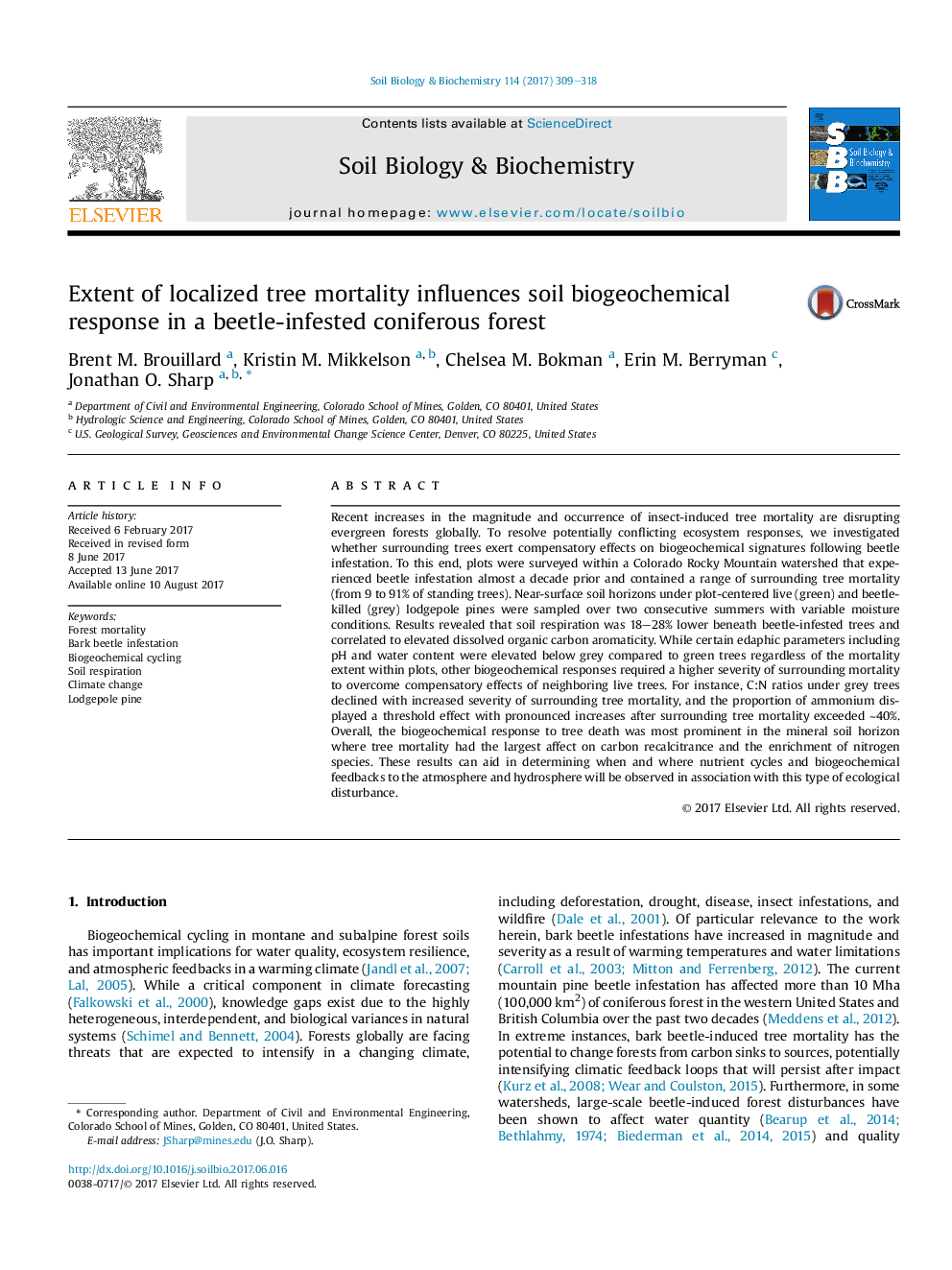| Article ID | Journal | Published Year | Pages | File Type |
|---|---|---|---|---|
| 5516330 | Soil Biology and Biochemistry | 2017 | 10 Pages |
â¢Surrounding trees influenced the aromaticity and respiration of organic carbon.â¢N-species, C-aromaticity, and C:N ratios shifted with extent of tree mortality.â¢The largest biogeochemical shifts occurred after surrounding tree mortality surpassed a threshold of 40%.â¢Altered C & N signatures were present nearly a decade after beetle infestation.â¢Shifts in biogeochemical signatures were most pronounced in the mineral horizon.
Recent increases in the magnitude and occurrence of insect-induced tree mortality are disrupting evergreen forests globally. To resolve potentially conflicting ecosystem responses, we investigated whether surrounding trees exert compensatory effects on biogeochemical signatures following beetle infestation. To this end, plots were surveyed within a Colorado Rocky Mountain watershed that experienced beetle infestation almost a decade prior and contained a range of surrounding tree mortality (from 9 to 91% of standing trees). Near-surface soil horizons under plot-centered live (green) and beetle-killed (grey) lodgepole pines were sampled over two consecutive summers with variable moisture conditions. Results revealed that soil respiration was 18-28% lower beneath beetle-infested trees and correlated to elevated dissolved organic carbon aromaticity. While certain edaphic parameters including pH and water content were elevated below grey compared to green trees regardless of the mortality extent within plots, other biogeochemical responses required a higher severity of surrounding mortality to overcome compensatory effects of neighboring live trees. For instance, C:N ratios under grey trees declined with increased severity of surrounding tree mortality, and the proportion of ammonium displayed a threshold effect with pronounced increases after surrounding tree mortality exceeded â¼40%. Overall, the biogeochemical response to tree death was most prominent in the mineral soil horizon where tree mortality had the largest affect on carbon recalcitrance and the enrichment of nitrogen species. These results can aid in determining when and where nutrient cycles and biogeochemical feedbacks to the atmosphere and hydrosphere will be observed in association with this type of ecological disturbance.
